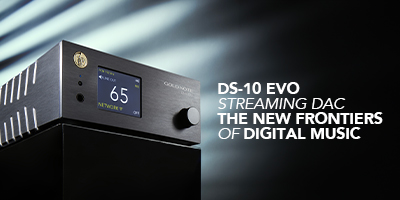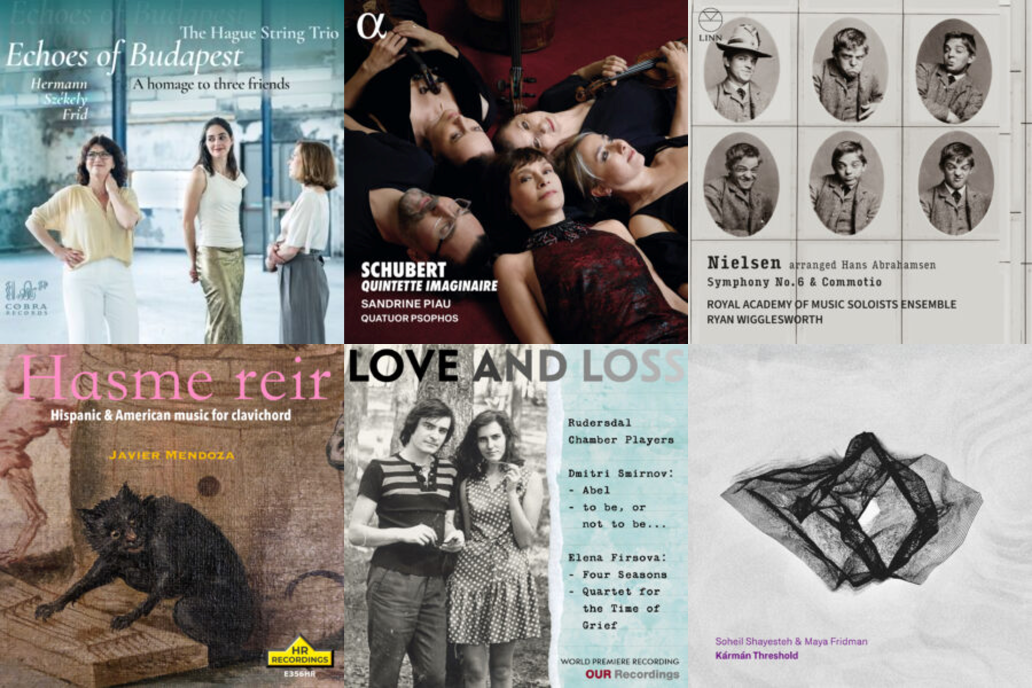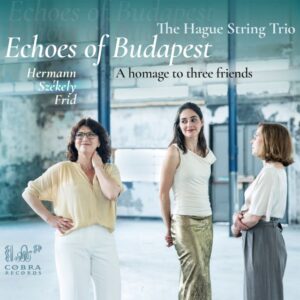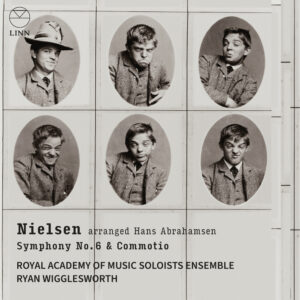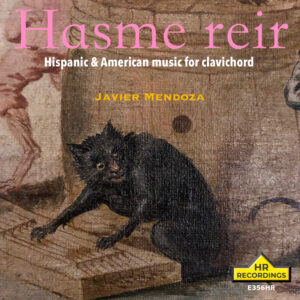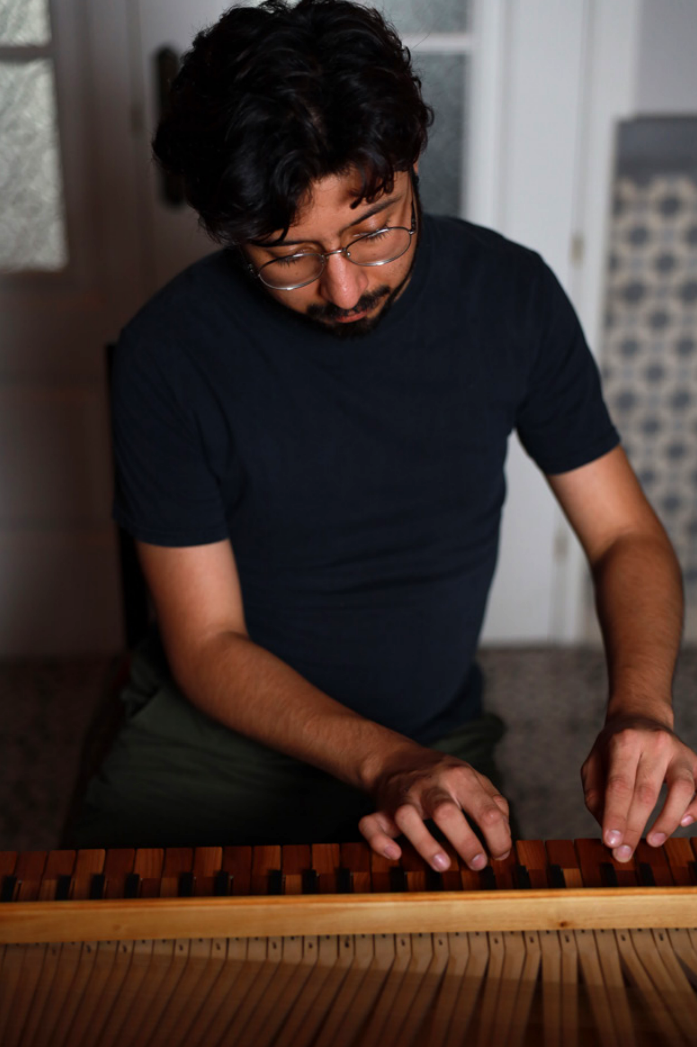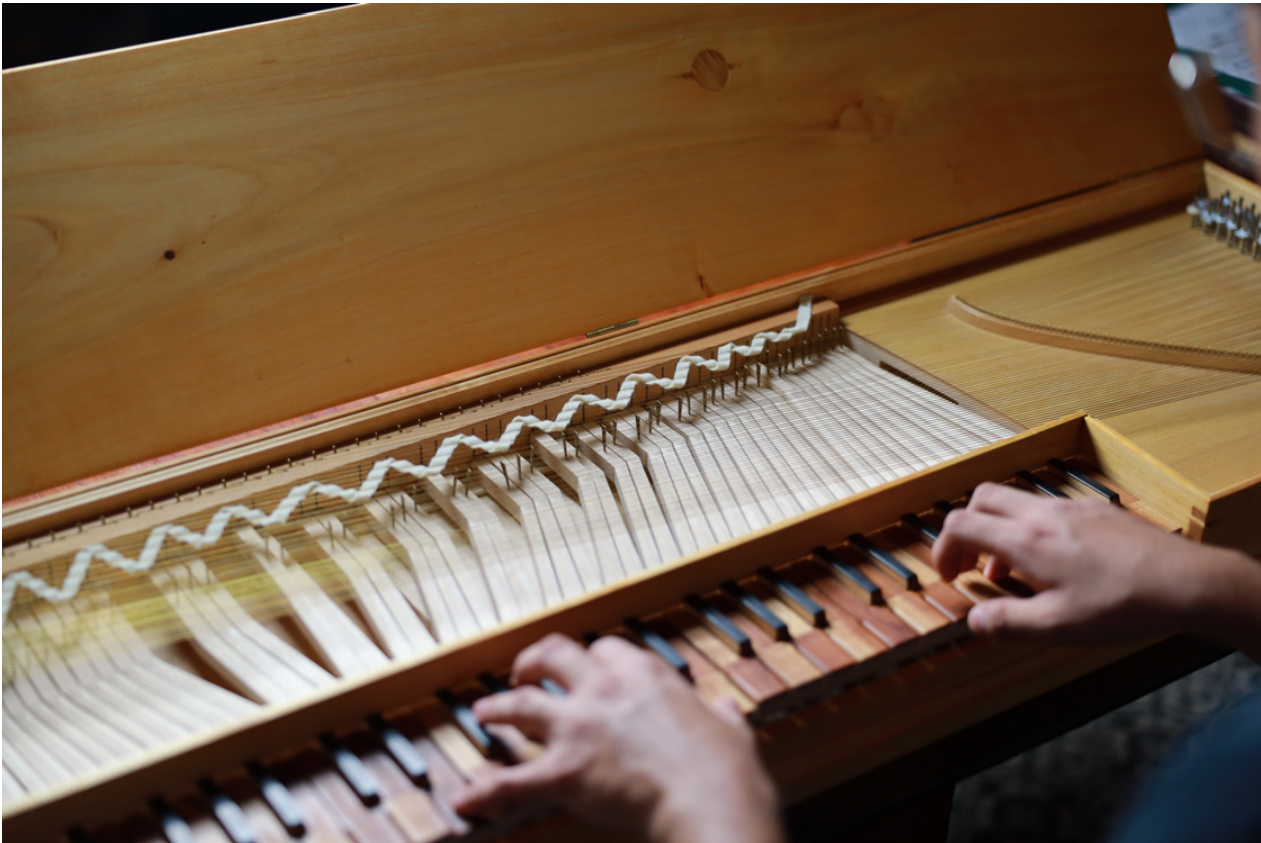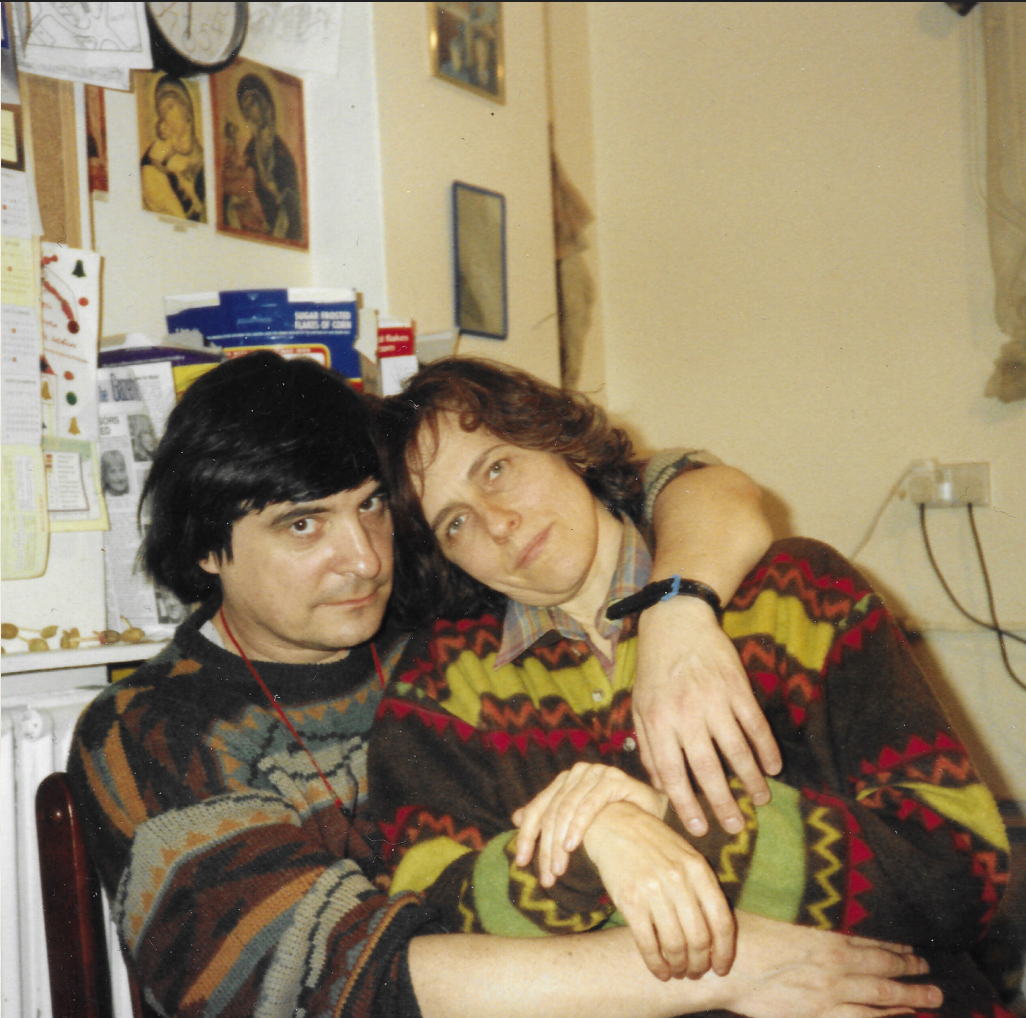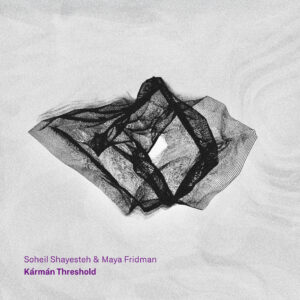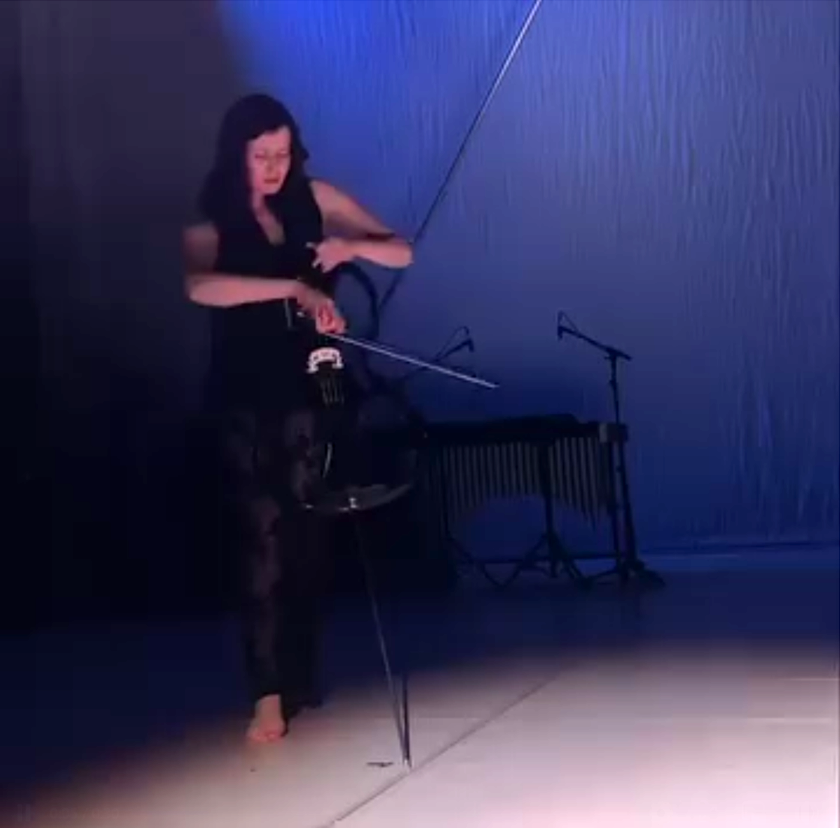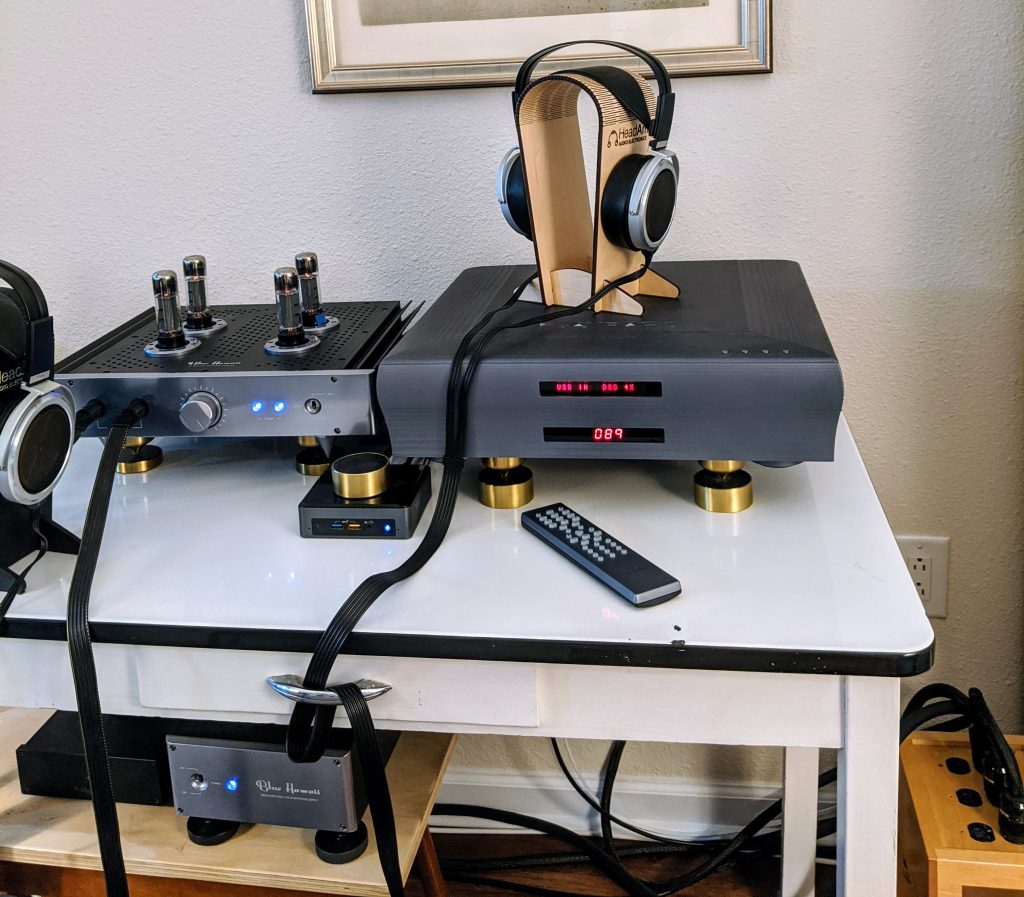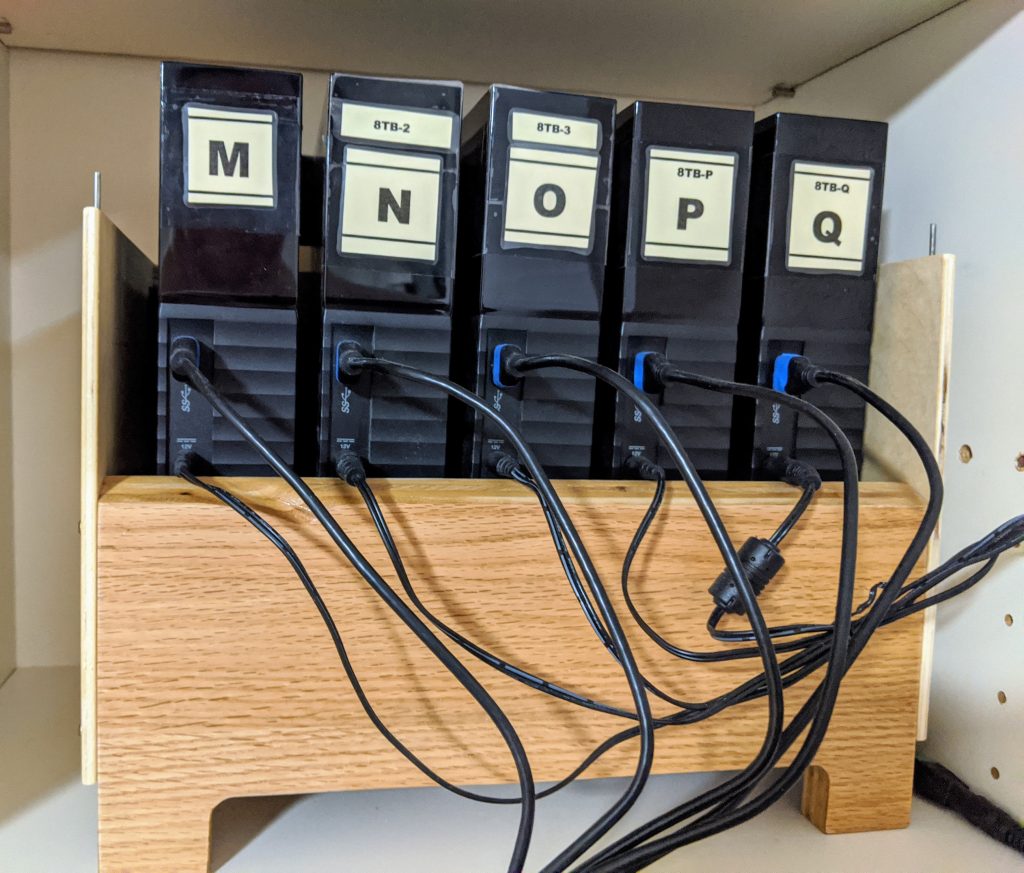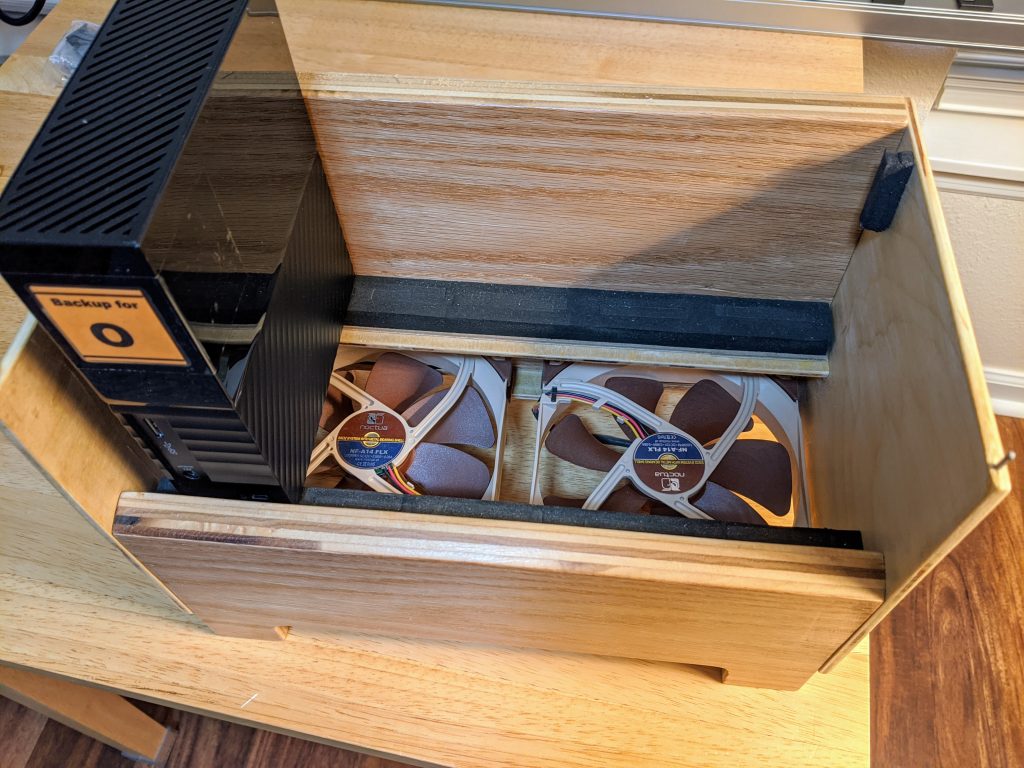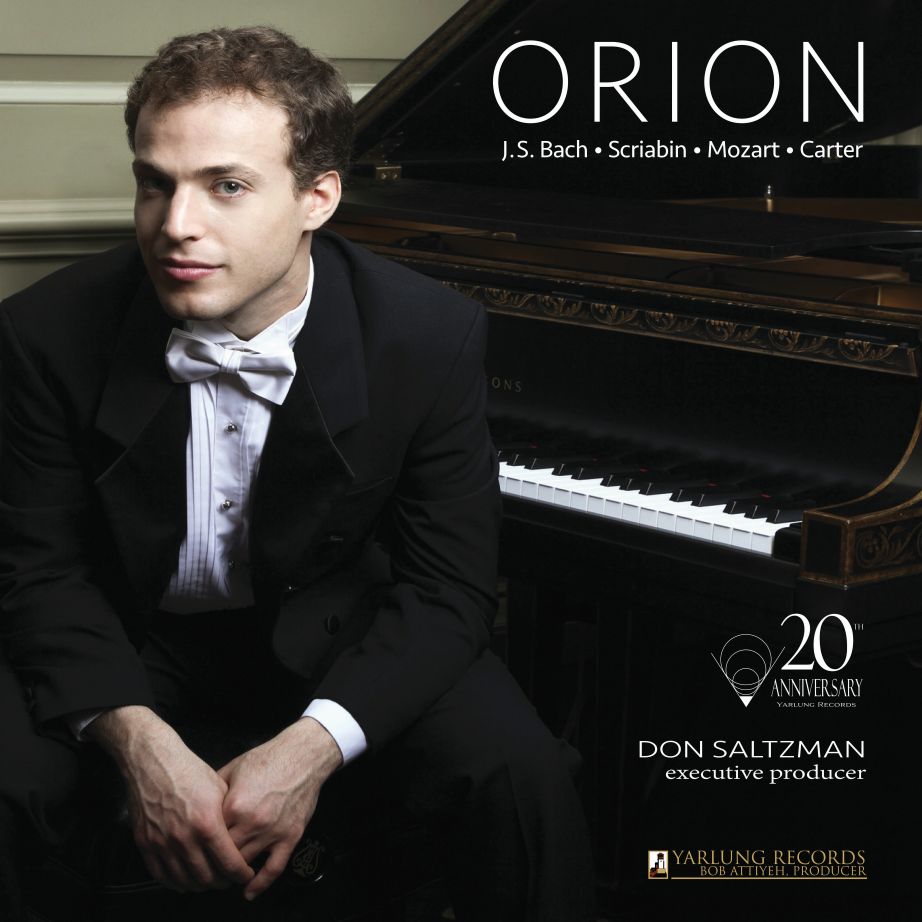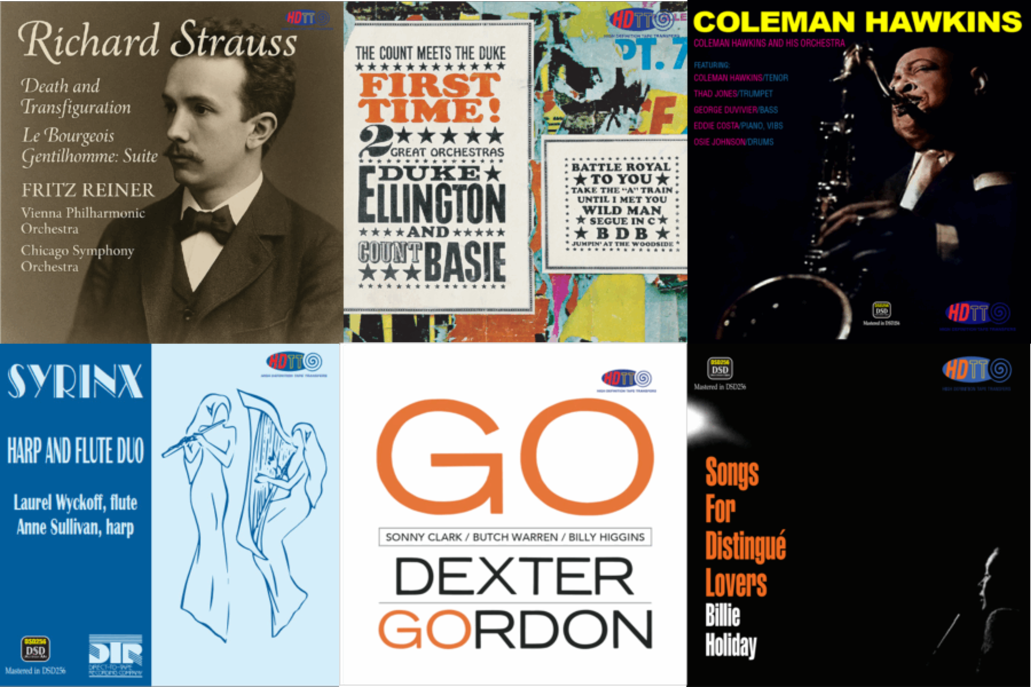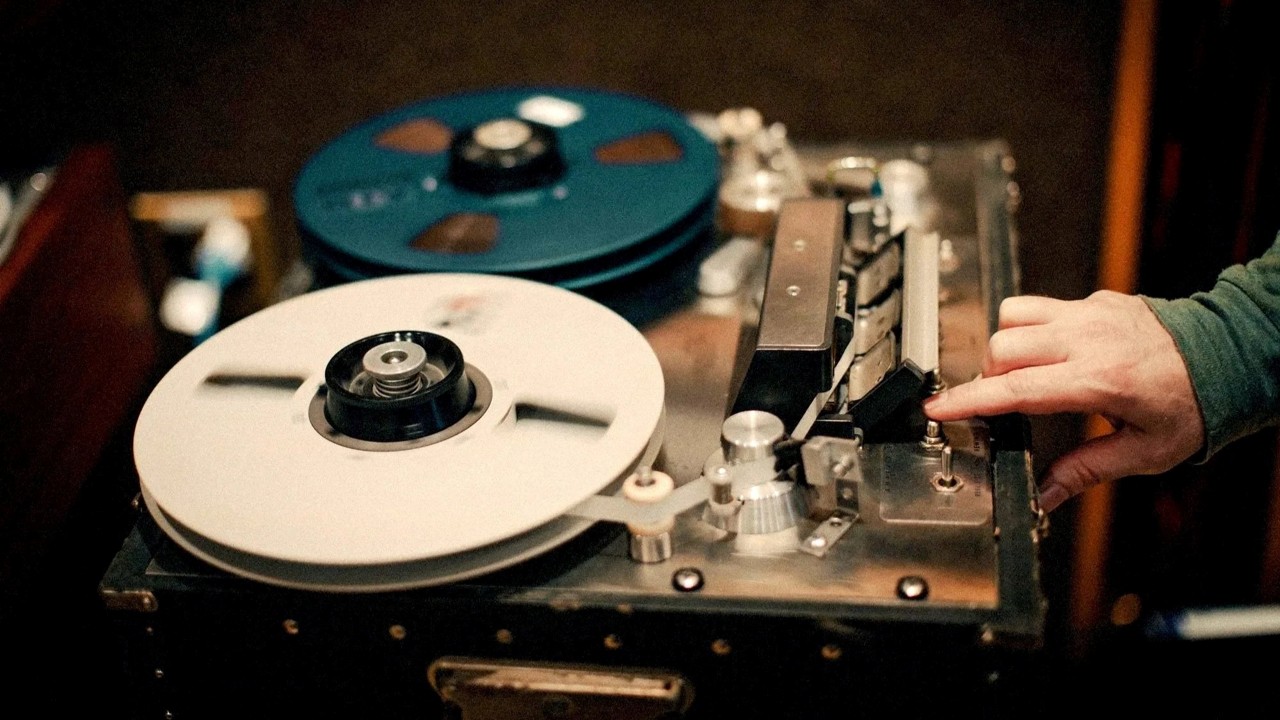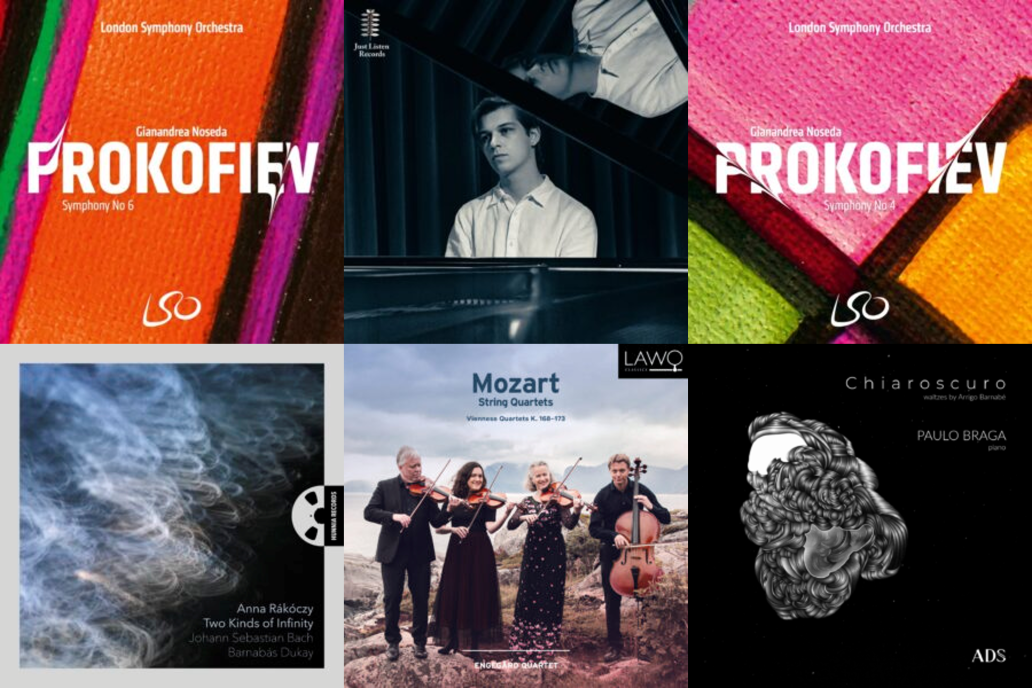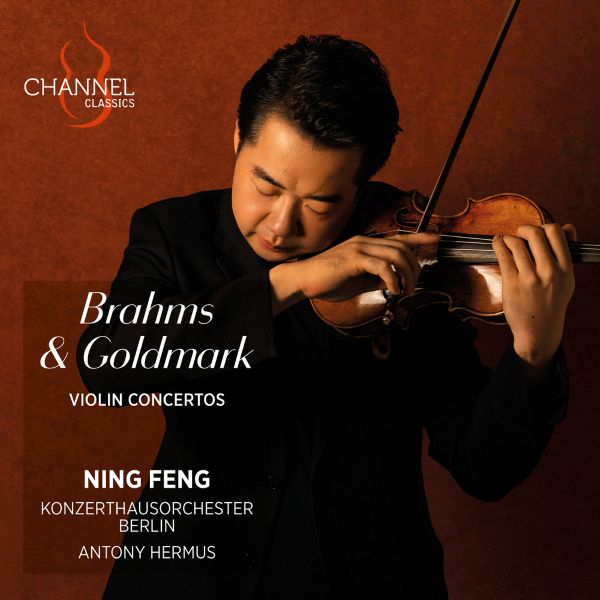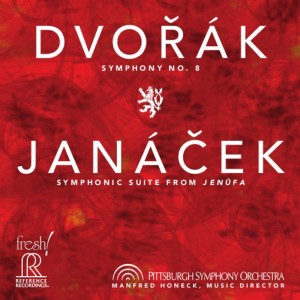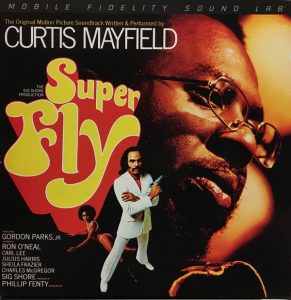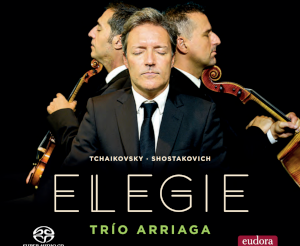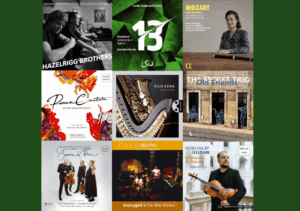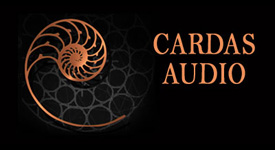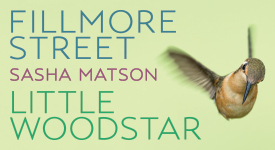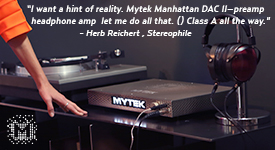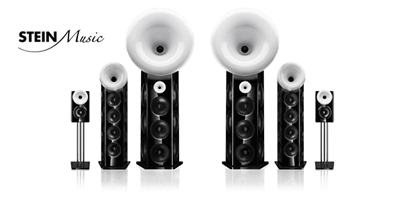Today's issue is an eclectic mix, and I think delightfully so. From an outstanding new release by The Hague String Trio of modern music composed in the 1920s, to even more challenging modern music of the past 30 years with the Rudersdal Chamber Players, to music of the 18th Century on clavichord (of all things), to re-imagined Schubert Quintets with the outstanding Sandrine Piau. And, a remarkable blend of the acoustic and electronic from cellist, composer, and mixed media performer Maya Fridman. I enjoy it all and I hope you find something here you will enjoy.
Echoes of Budapest, a homage to three friends, The Hague String Trio. Cobra Records 2025 (DXD, DSD256, Stereo, Binaural, MCh) Edit Master Sourced HERE
This new release from The Hague String Trio and Cobra Records is absolutely terrific! Once again, the Trio has made a wonderful selection of music. And, as always, they deliver outstanding performances, with total commitment and perfect execution. Plus, it is another superbly engineered recording from Tom Peeters, founder and recording/mastering engineer for Cobra Records. I am listening to the binaural DSD256 release and am just thrilled by it—totally engaging, verging on mesmerizing. To say I'm loving this new release is an understatement.
Is any of this ground-breaking, exalted music? No. But it is very good music that deserves to be heard, in my opinion. As usual, The Hague String Trio is bringing to us works of great merit that have rarely been recorded, if at all. In fact, two of the works here are world premier recordings.
Included are four works composed in the 1920s by three young Hungarian-Jewish composers—Pál Hermann (1902-1944), Zoltán Székely (1903-2001), and Géza Frid (1904-1989).
The Trio tell us that, "The three met as students in Budapest in the early 1920s and were each highly talented musicians: Hermann a gifted cellist, Székely an outstanding violinist, and Frid a brilliant pianist. Whilst political tensions, economic instability and antisemitism were rising in Hungary, their international careers flourished. All three left their homeland and, for a time, lived in the Netherlands, where their friendship endured. Their lives were soon disrupted by the outbreak of the Second World War. Hermann's life ended tragically: deported from France to Lithuania in May 1944, he was never to return. Székely and Frid survived the war; Frid remained in the Netherlands, while Székely later emigrated to the United States and then to Canada."
This is a an excellent new release by a Trio I have greatly valued over the past 15-20 years. Tom's recordings are always terrific, and he delivers another great one here. I have been listening to the DSD256 Binaural release, recorded with the Neumann KU-100 Artificial Head (see HERE for a further discussion of Tom's binaural recordings). And with this combination, all of the performers are precisely located in space and the overall imaging it simply rock solid, with outstanding detail and definition. I also listened to the Stereo release and it similarly had excellent imaging and detail, but with a bit more added "air" from the mixing process where Tom could blend in some of the sound from the ambient microphones.
The Hague String Trio performing the 1st movement of Pàl Hermann's String Trio contained on the album Echoes of Budapest.
Schubert: Quintette Imaginaire (Imaginary Quintet), Psophos Quartet, Sandrine Piau. Alpha Classics 2025 (96k, Stereo) Edit Master Sourced HERE
I have been late to coming to appreciate vocal music. And even later to appreciate solo voice. I admit to being a philistine in this respect, a cultural boor. We all have to bear our pasts. I've always enjoyed early period and Baroque choral music for some reason. Handel's cantatas have long been my thing. But, just choral music? Opera? Hmmm, not so much. However, over the past decade or so, I have begun to appreciate first choral music and, lately, solo voice. Lieder, chansons, song. It all depends on the voice.
And one voice I've come to appreciate greatly is that of Sandrine Piau, particularly in Baroque music. So, when I saw this album I was intrigued beyond measure. What the heck? A quintet with a soprano? Because, yes, I'm a complete sucker about chamber music for strings and keyboard.
I can't recall ever seeing a quintet in which the fifth instrument is the human voice. But, here it is. Four bows on strings with female voice as the fifth player in the group. There is no music composed for this particular combination that I know. Sandrine Piau and Psophos Quartet have created this. And they have done so by re-imagining selections of Schubert's oeuvre for a Quintette Imaginaire. Piau says, "Between the hair of the bows and the texture of the voice, our instruments blend and form an imaginary Schubert quintet."
The results are fascinating. They are enjoyable. They vibrate on the ears with new texture, new colors, new sounds to explore. And it works! By golly, it really truly works for a very engaging recital.
Sandrine Piau and Quatuor Psophos playing Schubert's Der Jüngling und der Tod, D. 545, track 1 from the album Schubert: Quintette Imaginaire.
Nielsen Symphony No. 6 and Commotio, Royal Academy of Music Soloists Ensemble, Ryan Wigglesworth. Linn Records 2025 (192k, Stereo) Edit Master Sourced HERE
These are arrangements, made for a smaller ensemble than a full orchestra, but they seem to hold quite true to the core of the composition. As stated in the accompanying booklet:
"Abrahamsen's transcription, written for the Athelas Sinfonietta Copenhagen, certainly allows more of that light-hearted side to come through. Its emphasis is on clarity. As in that arrangement, Abrahamsen neither adds nor composes; only edits and pares away. Nielsen's double winds are cut almost in half and his ten brass reduced to a trio of horn, trumpet and trombone. The three percussionists (essential for the symphony's most characteristic passages) are retained, but the strings are trimmed to the one instrument per part arrangement typical of the contemporary sinfonietta line-up.
"Finally, the bassoon, which plays an almost concertante role in Nielsen's score, sees a lot of its music given to the less stentorian combination of cello and double bass. In place of the missing wind and brass, Abrahamsen substitutes piano and harmonium which, alongside an almost complete removal of octave doubling, has profound effects on the work's texture and timbre. Everything becomes lighter and a little more bell-like, from the staccato vamping of the first movement to the pinging accents added to the fugue subject of the third (more influences from the Baroque!), while the harmonium adds a carnivalesque touch."
It's a pure delight! I recommend it to you most highly. I think you will find it light, engaging, a bit whimsical, and thoroughly enchanting.
That it was written after Nielsen knew that his life would be shortened by his serious heart condition, is remarkable. It demonstrates a composer who, far from withdrawing into settled compositional parameters in his final years, embarks on a path of surprisingly bold compositional discovery.
And once again, I am both very pleased by the engineering quality of the recording and yet frustrated the Linn's continuing insistence on locking in at an original recording resolution of 192k. Such a shame to have lost the opportunity for even better sound quality than we are given.
Hasme Reir (Make Me Laugh): Hispanic & American Music for Clavichord, Javier Mendoza. HR Recordings 2025 (DXD 32-bit, Stereo) Edit Master Sourced HERE
The clavichord is an interesting instrument to hear. Not quite a harpsichord but still with plucked strings. And quite easy to haul around. These compositions come a manuscript held in the Jesuit Mission of Chiquitos, Bolivia, circa 1746, some anonymous and some by well known composers of the period. A fascinating album.
Javier Mendoza tells us, "Among the composers on this album we will find Doménico Zípoli, (1688-1726), Correa de Arauxo, (1584-1654), Antonio de Cabezón, (1510-1576) and Sor María Clara del Santísimo Sacramento, (1806-1861) a Mexican nun from the order of the "Concepcionistas" who wrote lots of pieces found in a book called Cuaderno de tonos de maitines."
Not all albums of interest need to be earth-shattering. They can just be nice. They can just be enjoyable. They can just open new windows that give one a peak into some lesser known world. This is such an album. And most enjoyable!
Love And Loss, Rudersdal Chamber Players. OUR Recordings 2025 (DXD, Stereo) Edit Master Sourced HERE
If you like modern music for chamber ensemble, get this album.
An unexpected delight. I've listened to albums from the Rudersal Chamber Players in the past and always enjoyed their performances. I had no idea what to expect with this. But it is very nice! These are chamber works by two composers, Elena Firsova (b. 1950) and Dmitri Smirnov (1948-2020), who met and fell in love while studying at the Moscow Conservatoire.
Smirnov and Firsova's music was heard in "unofficial" concerts outside the USSR—outside the control and permission of the Union of Soviet Composers. Their music was decidedly not of a style condoned. And their denunciation in 1979 led to severely restricted opportunities. With the futures of their children to consider, they—like so many of their fellow free-thinking composers—made the difficult decision to leave their native Russia. They moved to England in 1991 and settled in St Albans, north of London.
The earliest work on this album was composed in 1991, the others date from 2018-2023. They are challenging, modern compositions. I thoroughly enjoyed them, and was challenged by them in all the best ways.
Dmitri Smirnov and Elena Firsova
Founded in 2017, the Rudersdal Chamber Players do an outstanding job of interpreting and presenting this music. Their programming is always innovative, challenging. They've outdone themselves with this release—in the best ways possible. I simply can't recommend this recording more highly. Just go listen!
Rudersdal Chamber Players
Kármán Threshold, Soheil Shayesteh & Maya Fridman. TRPTK 2025 (EP, DXD 32-bit, Stereo, MCh) HERE
Cellist Maya Fridman is an artist whose performances, compositions, and recordings consistently fascinate me. I find her work endlessly creative and compelling. This new release, in collaboration with electronic music producer, composer, and musician Soheil Shayesteh, presents an intriguing blend of electric cello and live processed electronics to create an abstract sonic creation of stretched time and space. With influences and backgrounds in contemporary classical, Persian traditional, medieval, experimental electronic and audio-visual music, the duo has developed its own sound palette. It is a sound palate that is unique, intriguing, and immersive.
Maya says that "improvisation remains the key element" with micro-compositions. As with other of her recent albums, there is a strong element of ritual in the conception of the three works on this album.
But, this is no gentle affair. This is dark, stark, propulsive, and, on occasion, raucous music. It is no gentle walk through the grass. It is pulsing, dramatic, gut-grabbing when it chooses to be.
So, consider this a recommendation to explore, to engage in a musical experience that bends, blends, stretches, and soars as these two musicians combine the acoustic and the electronic in what feels spontaneous, improvisational, but still highly structured, highly intentional. I'm unsure what acoustic instruments may be included in this album because Maya says this is the first recording she's made entirely with her electric GEWA cello. Still, the sound of the cello, while not a natural acoustic sound, is clearly that of the cello. And differentiates very clearly from the rest of the electronically generated sounds with which it weaves the bit of magic that is this album.
Maya Fridman doing an unrelated sound-check playing an improvisation on her GEWA E-Cello Novita 3.0. From a Facebook video post by Maya, January 30, 2025 HERE.
All images courtesy of the respective labels.

